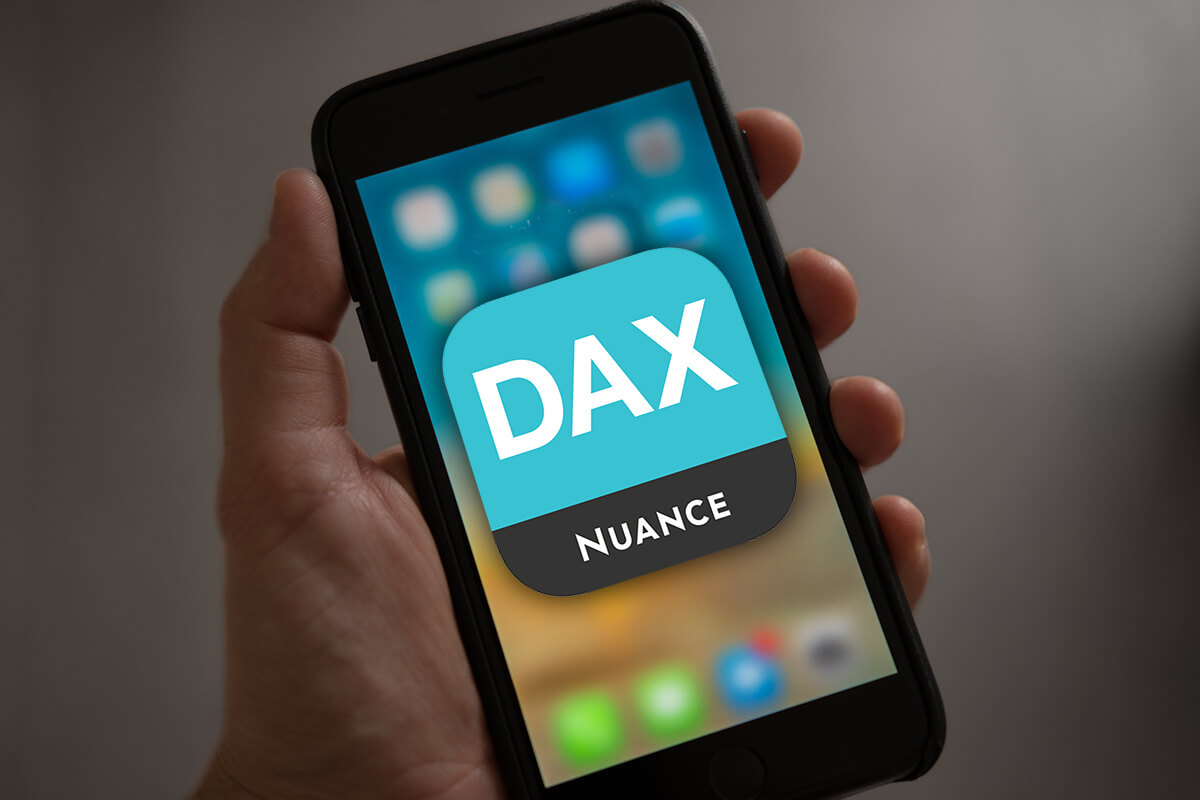March 2, 2021
DAX: A Patient and Clinician Win-Win in the Making
In simple terms, the promise of DAX—the Dragon Ambient Listening Experience AI tool from Nuance—is an accurate, accessible medical record that reduces the amount of “pajama time” at night when many physicians and APPs find themselves updating documentation.

“The long-term goal,” according to Dr. Lynn McFarling, Chief Medical Information Officer, “is to integrate DAX documentation technology with voice recognition — think digital assistant, Hey Epic — to navigate a chart, find information, add problems, diagnoses and orders by voice, then sign those on review. What we thought was further down the road is actually coming along much faster.”

So fast, in fact, that DAX is currently being prototyped by clinicians throughout CentraCare and Carris Health. “It lets me be a little more present with my patients,” said Dr. Gabrielle Vencel-Olson, a Family Medicine doctor with Carris, “Less keyboarding time and it helps get the orders in a little quicker. While there is some duplication right now, I can see the potential for saving time.”
“Nuance is using their natural language processing engine along with Artificial Intelligence to learn the context of conversations at an office visit. It then takes that information and creates a note for the visit,” explains Dr. McFarling. “It can listen in on a visit between a patient and a provider, and even another third person in the room, and recognize who’s a physician or advanced practice provider versus a patient. It takes the common language of a visit and translates it into medical terminology in a note.”
How Do You Train A.I.
Artificial intelligence isn’t magic. It requires a human to train it, plus programmers to create algorithms, and more. So when Dr. Libby Brever, another physician working with DAX at the Albany Clinic, drops the listening device into the front pocket of her white coat and interacts with her patient, she says it’s like having a scribe in the room.
Artificial intelligence isn’t magic. It requires a human to train it, plus programmers to create algorithms, and more.
“I have the app on my phone. My schedule is loaded within the app. I select the patient, hit record and say the patient’s name. Then I confirm the note type, and go in and do my visit,” says Dr. Brever.
Right now, there is a CDI-like person at Nuance (Clinical Documentation Integrity) reviewing Dr. Brever’s notes and reviewing what the AI is learning. Where necessary, that person teaches the AI, correcting where it isn’t right. That means there is an investment of time to review the notes and train the AI. It could take two hours to return the note to the clinician or longer in rare instances. To Dr. McFarling and Amy Porwoll, CentraCare’s Chief Information Officer, that is one of the challenges of being in on the ground floor of this technology. But there are big benefits of training the AI with Nuance. “By doing this now, we’ll be in a really nice space for primary care and our specialties to take advantage of AI to transcribe notes in real time and use the advanced features of integrating the voice assistant when they’re available,” says Dr. McFarling.
Dr. Brever sees other benefits, too. Scribe turnover is a challenge, as is recruiting and training. Since 2018, Dr. Brever has had four or five scribes. She also sees a benefit in the Team Based Care model that is now practiced at the Albany clinic. Said Dr. Brever, “With our team-based care model, a nurse is going to be helping with the documentation. DAX will potentially off-load some of that work.”
Working Out the Kinks
Both Dr. Vencel-Olson and Dr. Brever have opted not to use DAX for their physical exam portion of the note. “Basically,” said Dr. Brever, “I would have to dictate my entire physical exam for them and so it’s easier for me to just use smart phrases or smart text and drop it down myself. I can do that in 30 seconds, whereas dictating would take longer.”
The other big commitment is for the assessment and plan component.
The other big commitment is for the assessment and plan component. Dr Brever will try to do a quick summary for her patient before leaving the room. “I say some things out loud that the scribe would capture as I went through the exam, but with the AI, I need to summarize it. Something like, ‘So, you know, your hypertension is currently well controlled and you’re at goal. We’re going to continue your medications and follow up in six months.’” Her husband, Dr. Nate Brever, chooses to step out of the room, then dictate a brief assessment and plan, saying exactly what he wants to say as concisely as he chooses.
Then there is the unexpected, like when two sisters—age four and seven—come in together and the younger sibling repeatedly shouts in the background, “I’m going to suck your blood!” Dr. Brever checked-in with Nuance on that one and was assured that DAX would disregard the vampiric enthusiasm of the younger sister.
Seeing Immediate Time Savings
At the Albany Clinic, the Physician Assistants (PAs) are using DAX, too, and seeing some astounding personal benefits. In a conversation between Dr. Brever and Jen Gannon, PA, Jen mentioned that she would frequently spend three hours a night finishing up dictations and related work. “Now, I’m down to one hour after work,” she said.
That’s a serious leap in the right direction for pajama time.

